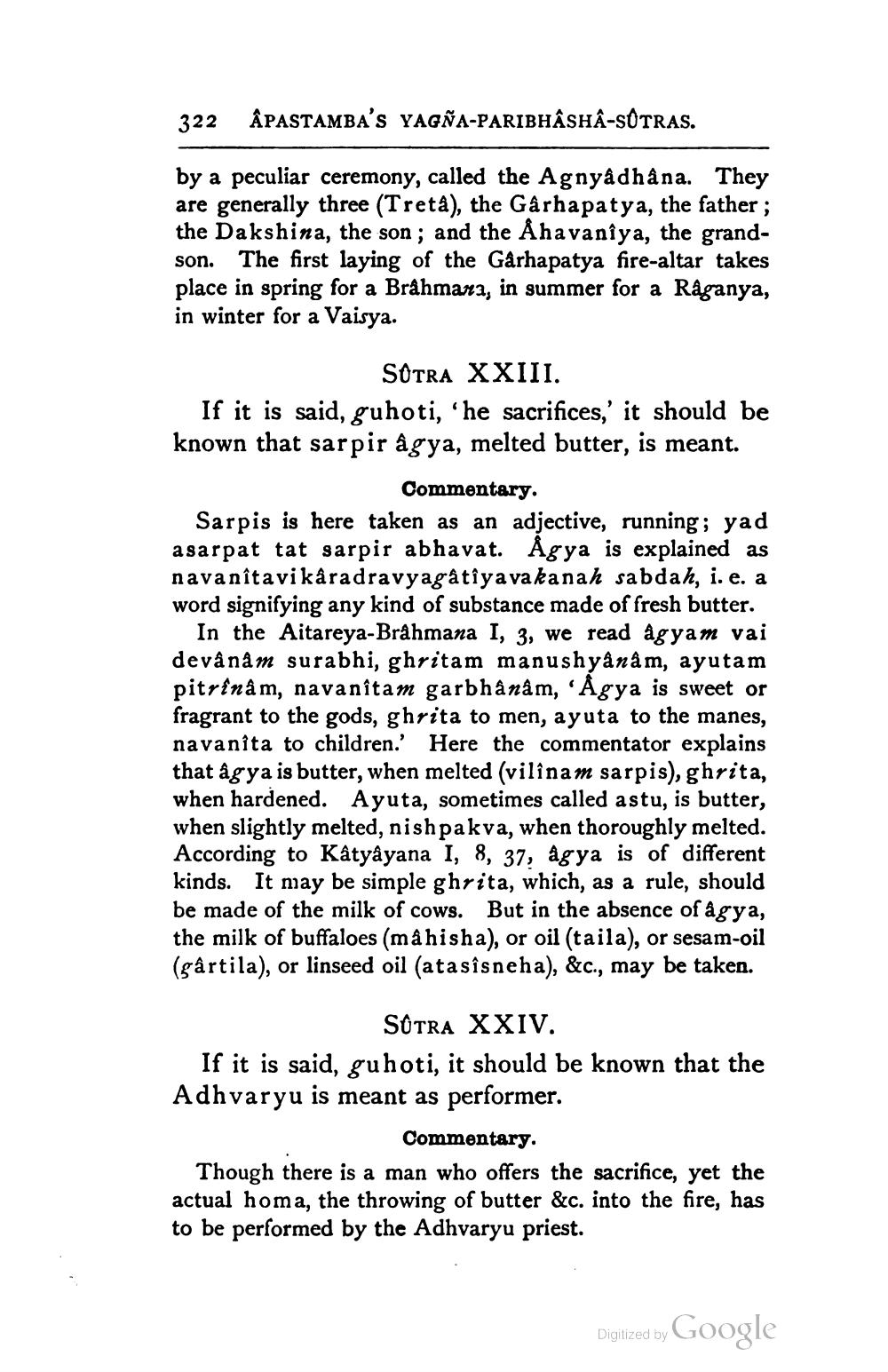________________
322
ÅPASTAMBA's YAGÑA-PARIBHASHA-SOTRAS.
by a peculiar ceremony, called the Agnyâdhana. They are generally three (Treta), the Garhapatya, the father ; the Dakshina, the son; and the Åhavaniya, the grandson. The first laying of the Gârhapatya fire-altar takes place in spring for a Brahmana, in summer for a Râganya, in winter for a Vaisya.
SOTRA XXIII. If it is said, guhoti, 'he sacrifices,' it should be known that sarpir âgya, melted butter, is meant.
Commentary. Sarpis is here taken as an adjective, running; yad asarpat tat sarpir abhavat. Agya is explained as navanîtavikáradravyagâtîyavakanah sabdah, i.e. a word signifying any kind of substance made of fresh butter.
In the Aitareya-Brâhmana I, 3, we read agyam vai devânam surabhi, ghritam manushyanam, ayutam pitrinâm, navanitam garbhânâm, 'Agya is sweet or fragrant to the gods, ghrita to men, ayuta to the manes, navanîta to children. Here the commentator explains that âgya is butter, when melted (vilînam sarpis), ghrita, when hardened. Ayuta, sometimes called astu, is butter, when slightly melted, nishpakva, when thoroughly melted. According to Katyayana I, 8, 37, agya is of different kinds. It may be simple ghrita, which, as a rule, should be made of the milk of cows. But in the absence of agya, the milk of buffaloes (må hisha), or oil (taila), or sesam-oil (gârtila), or linseed oil (atasîsneha), &c., may be taken.
SOTRA XXIV. If it is said, guhoti, it should be known that the Adhvaryu is meant as performer.
Commentary. Though there is a man who offers the sacrifice, yet the actual homa, the throwing of butter &c. into the fire, has to be performed by the Adhvaryu priest.
Digitized by Google




